Whenever I get the opportunity I try to find books written by,
or about, past luminaries of the turf.
Unfortunately they are few and far between, but I recently found one entitled Men and Horses I have Known by The Hon. George Lambton. For those of you unfamiliar with George Lambton he was the 5th son of the Earl of Durham, and later in life became the trainer for Lord Derby and an advisor to His Highness the Aga Khan.
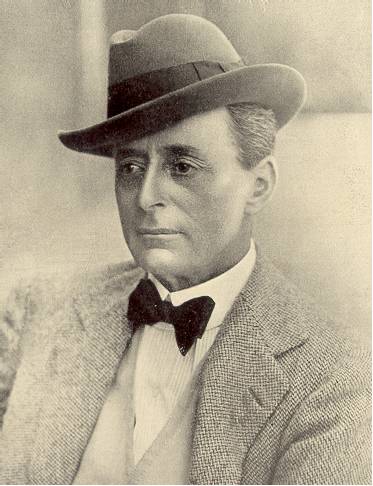 The book is very insightful and near the end Mr. Lambton takes up a horse that he showed great affection for, and was obviously his favorite. That horse was a mare bred by Lord D’Abernon by Orby-Donnetta by Donovan. The following is a quote from George Lambton expressing his first impressions of Diadem.
The book is very insightful and near the end Mr. Lambton takes up a horse that he showed great affection for, and was obviously his favorite. That horse was a mare bred by Lord D’Abernon by Orby-Donnetta by Donovan. The following is a quote from George Lambton expressing his first impressions of Diadem.
“When Diadem was a yearling Lord D’Abernon told me that she was the best he had ever bred, but I am bound to say that when she first came to me I was rather disappointed. She was a small dark chestnut filly, rather light of bone, with a light neck and apparently without much energy, but she had a beautiful intelligent head and did everything that was asked of her without any fuss or bother. Still I could not see where her great excellence was to come from. However, Lord D’Abernon was such a fine judge of a racehorse that I took more than an ordinary interest in her.”
That was George Lambton’s introduction to Diadem. To say the least, he was not impressed, but that would change under unusual circumstances. George Lampton goes on to say,
“Being late in shedding her winter coat and rather a shy feeder, her owner decided not to run her before the Coventry Stakes, which race, owing to the war was run at Newmarket that year. Ten days before the race I gave her a rough gallop, and for the first time she showed a glimpse of that wonderful dash and speed for which she was afterwards so famous. This gave me great hopes that she would win, but when she appeared in the Paddock she looked so listless and so small that I began to lose confidence, and when she cantered down to the post she appeared not to be able to move at all. I then felt certain that she must have gone amiss and wished she were back in the stable. I don’t think I was ever more surprised in my life when, after standing as quiet as a sheep at the Post, she jumped off like a flash and settled her field in two furlongs. That was Diadem; she seemed to keep every once of energy in her little frame for the supreme moment. Her listless walk in the Paddock and her wretched action going to the Post often got us a point or two better odds against her. Martin, who rode her, said to me after the race, “If the others are worth a shilling this is the best mare I ever rode in my life.”
So, this was the mare Lambton fell in love with. The diminutive, and lightly built, yet still mighty Diadem. She won four out of five starts as a two-year-old losing only to a colt named Dansellon in the Hopeful Stakes while giving him a nine pound weight concession.
As a three-year-old, Diadem’s first race was the 1,000 Guineas which she won easily from Sunny Jane. Lambton went on to report that the same week the Two Thousand Guineas had been won by Gay Crusader.
“He had only just scrambled home from his stable companion, Magpie, and in the Craven week had run second to Lord Derby’s Coq d’Or in the Column Produce Stakes. He was certainly giving 9 lb. but Coq d’Or was nothing more than a useful horse, although as a two-year-old he had beaten Gay Crusader in the Criterion (the only two occasions on which this great horse was beaten).
These performances did not give Lord D’Abernon and myself an exalted opinion of Gay Crusader, so it was decided that instead of waiting for the Oaks, Diadem was to run for the Derby. On the day of the race, we were rather afraid of that extra half mile, and we were more full of hope than of confidence, but when we saw Gay Crusader in the Paddock even that hope went. I have never seen such an extraordinary improvement in so short a time; he was altogether a different horse to the one we had seen in the Two Thousand. If at so late an hour it had been possible to withdraw Diadem, Lord D’Abernon would have done so, but she had been well backed by the public, so it was out of the question. There had been a lot of rain and the July Course was holding, and not suitable to the mare. Two furlongs from home her fate was sealed, Gay Crusader winning easily.”
 Despite the loss in the Derby Diadem’s connections (against Lambton’s better judgment) decided to run her back in the Oaks 4 day’s later. Remember, two one mile and a half races against classic competition in four days by a filly which could not be described as having a robust constitution.
Despite the loss in the Derby Diadem’s connections (against Lambton’s better judgment) decided to run her back in the Oaks 4 day’s later. Remember, two one mile and a half races against classic competition in four days by a filly which could not be described as having a robust constitution.
In the Oaks Diadem and Sunny Jane separated themselves from the field coming out of the dip, but by this time all of Diadem’s speed was gone, and nothing but her great heart enabled her to hang on. After a terrific battle she was beaten by half as length. George Lambton went home a miserable man thinking to himself that she would never get over these two races, and sure that not one filly in a million would have done so, but after a good rest she came back as good as ever.
Diadem raced until she was six years old becoming a top sprinter capable of carrying 140 pounds on her small frame. She even had a home trial against the great Phalaris over ½ mile in which Lampton judged the filly to have prevailed by a nose.
One of her greatest performances was winning the Salford Borough Handicap at Manchester, and on this occasion she was ridden by Carslake. Many great races has Carslake ridden for me, but he fairly excelled himself then, carrying 138 pounds, giving lumps of weight away to a smart field, including Irish Elegance (July Cup) to whom she was conceding 28 pounds; she won in the last few strides by a neck. The pace was so tremendous that even with her great speed she was on the stretch all the way; she was a tired mare a hundred yards from home and Carslake fairly lifted her past the post. Although he had never hit her, she had given every once that was in her. When he had taken off the saddle he looked at her as she stood every nerve and muscle quivering, and said in a quiet way, “What a wonder, but how does she do it?”
Diadem is the epitome of what we love in a racehorse. She wasn’t much to look at, but had the courage of a Lion, and the heart of a champion. Is it any wonder that a luminary of the turf such as George Lampton fell in love with her.
As great as is the story of Diadem she can serve us in another way. Her pedigree is a treasure trove of information that can lead to the production of future classic horses.
To begin let’s venture back in time to the year 1769 and the foaling of the mare Atalanta by Matchem. The important fact to keep in mind is that although she is by a leading sire in Matchem, not one horse of merit can be found in her tail female line stretching from Atalanta back 10 generations to the founding mare of the Number 2 Family the Burton Barb Mare. Then things begin to change. Atalanta is bred to another leading sire in King Fergus and gets a daughter named Flora. Flora is then bred to an obscure stallion named Hyacinthus who is a grandson of Atalanta producing the mare by Hyacinthus. When the mare by Hyacinthus is bred to another grandson of Atalanta, Camillus, the result is the Cluster mare Treasure.
For those of you who are unfamiliar with Dennis Craig’s great book Breeding Racehorses from Cluster mares let me explain to you what constitutes a cluster mare. A cluster mare is one who within 6 generations has produced two or more winners of five or more of the most important races on the calendar. The following are the horses tracing to Treasure that make her a cluster mare:
| Horse | Races Won | Generations Back |
| Destiny | 1,000 Guineas | 2 generations to Treasure |
| Industry | Oaks | 2 generations to Treasure |
| Lady Evelyn | Oaks | 3 generations to Treasure |
| Butterfly | Oaks | 3 generations to Treasure |
| Voltigeur | Derby, St. Leger | 3 generations to Treasure |
| Imperieuse | 1G, St. Leger | 4 generations to Treasure |
| Camballo | 2,000 Guineas | 5 generations to Treasure |
| Lord Clifden | St. Leger | 6 generations to Treasure |
| Engurrande | Oaks | 6 generations to Treasure |
| Dutch Oven | St. Leger | 6 generations to Treasure |
| Carbine | Melbourne Cup | 6 generations to Treasure |
It is obvious to see after 10 generations that produced nothing of note, comes six generations that result in 11 winners of 13 classic races. What changed? What changed was using stallions to reinforce their own immediate female line.
I’ve shown you Atalanta’s family to allow you to understand what happens when the same pattern leads up to the production of Diadem. It happens frequently and is common in the breeding of great Thoroughbred champions.
One more important piece of information about cluster mares is that from the beginning of the breed up until 1960 when Dennis Craig wrote his book Breeding Racehorses From Cluster Mares there had been 861 winners of the eight most important races in Great Britain. Of these 861 classic winners 66% trace within 6 generations to only 130 mares. The mares that have 5 classic winners tracing to them he called Cluster mares while those with 3 or 4 classic winners he called Star mares. These mares are the building blocks of the breed, and represent a concentrated form of classic speed
The starting point in understanding Diadem’s pedigree begins in 1837 with her 8th dam the Langar Mare. This time period stretches back 77 years from Diadem’s foaling in 1914. If you look at the Langar Mare’s pedigree you see that she is inbred to the Alexander Mare through her male and female lines.
Pedigree Query Langar & Mare 7
Ten years later the Langar Mare produced a daughter named the Ithuriel Mare who picks up a 3rd cross of the the Alexander Mare through her sire Ithuriel. The Ithuriel Mare is now bred in a similar manner to Treasure who had 3 crosses of her own female line.
Pedigree Query Ithuriel & Mare
What is the importance of the Ithuriel Mare? She is the ancestoress of Teddy, and Gainsborough. Teddy sired Bull Dog and Sir Gallahad III, while Gainsborough won the 2,000 Guineas, Derby, and St. Leger and sired Hyperion. Where Diadem is concerned the Ithuriel mare is the 2nd dam of Blanchette. Blanchette a foal of 1871 is the 5th dam of Diadem. The contribution that Blanchette makes to this female line comes from the fact hat she is inbred through both sire and dam to the Langar Mare. Since the Langar Mare is herself inbred to the Alexander Mare this gives Blanchette 4 crosses of the Alexander Mare.
Another aspect to consider when examining Blanchette’s pedigree is her sire D’Estournel. Ever heard of him? I’m certain you have not as he is about as obscure as a stallion can be. His function in this case was to provide the pedigree with another cross of the Langar mare
Finally we get to Traviata the 3rd dam of Diadem. Her sire Cremorne might be considered obscure by most but he was a very good racehorse having won the Derby, Ascot Gold Cup, and Grand Prix de Paris. Again his significance in this pedigree is that he adds a 3rd cross of the Langar Mare.
In effect, Traviata is bred along the same pattern as Treasure
Traviata and Treasure are bred on the same pattern and both achieved Cluster mare status as according to Dennis Craig’s criteria of having 2 or more runners winning 5 or mores of the most important races on the calendar tracing to them. We’ve already listed Treasure’s descendants and the following are Traviata’s
| Horse | Races Won | Generations Back |
| Diadem | 1,000 Guineas | 3 generations to Traviata |
| Diophon | 2,000 Guineas | 4 generations to Traviata |
| Dionysos | Irish St. Leger | 4 generations to Traviata |
| Rustom Pasha | Eclipse Stakes | 4 generations to Traviata |
| Feu Du Diable | Prix Royal Oak | 5 generations to Traviata |
| Armgard | German Oaks | 5 generations to Traviata |
| Alarich | German Derby | 6 generations to Traviata |
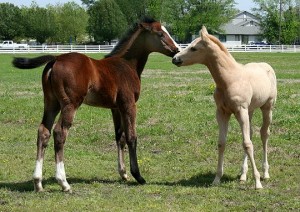 Traviata is the 3rd dam of Diadem and is a cluster mare representing a concentrated form of classic speed. Likewise, Diadem’s 2nd dam Rinovata is also a cluster mare having all of the same runners as did Traviata within 6 generations but adds two more in Sweet Sue winner of the Argentine Oaks, and Rockavon victor in the 2,000 Guineas.
Traviata is the 3rd dam of Diadem and is a cluster mare representing a concentrated form of classic speed. Likewise, Diadem’s 2nd dam Rinovata is also a cluster mare having all of the same runners as did Traviata within 6 generations but adds two more in Sweet Sue winner of the Argentine Oaks, and Rockavon victor in the 2,000 Guineas.
With cluster mares this close up in her female line is it any wonder that Diadem possessed an inordinate amount of blinding speed. One might then ask why she didn’t follow in the hoofprints of her illustrious female ancestors and herself become a cluster mare? The answer may lie in the fact that she only produced one daughter and that daughter in turn only produced one female to continue the line. It became a matter of opportunity.
In a way this should conclude the discussion of Diadem and what made her such a superior racemare. However, without confirmation one might come to the conclusion that this was just an anomaly in this particular female family. Before we take the next step here is another quote from Dennis Craig.
“My final conclusion then is that bloodstock breeders should take yet another and closer look at the classic methods of mating practiced by their successful forebears, as discussed in detail in this book: inbreed, not to the same stallion, but to the same cluster or star mares within three to five generations; refrain from outcrossing to sires and dams who have few, if any, cluster or star mares in their pedigrees; utilize the services of those less fashionable non-classic winning stallions who have some of the same cluster or star mares close up in their lineage as the breedmares with whom it is proposed to mate them.”
With the following statement in mind let’s look at the non-stakes winning brother to Diadem a colt named Diadumenos. The best he could do was a 3rd place finish in the Cambridgeshire Handicap carrying 99 pounds. Yet he was still able to have an impact on the modern racehorse through one mating. In 1923 Diadumenos was mated to Ventursome by Sir Martin to get a foal of 1924 named Risky. Her pedigree follows;
Looking at her pedigree it’s easy to see that Diadumenos was bred to a mare from his own female family to get Risky. And you can almost guess the outcome. Risky is a cluster mare. She earned that status by being the dam of Alabama Stakes winner Risque and the following;
| Horse | Races Won | Generations Back |
| Risque | Alabama Stakes | 1 generations to Risky |
| Fort Marcy | Washington D.C. Int. twice | 5 generations to Risky |
| Key to the Mint | Travers Stakes, Withers Stakes | 5 generations to Risky |
| Cool Mood | Canadian Oaks | 5 generations to Risky |
Not only did Risky become a cluster mare by being the ancestress of the former top runners, but she is also the 4th dam of cluster mare Happy Mood who has the following tracing to her;
| Horse | Races Won | Generations Back |
| Cool Mood | Canadian Oaks | 1 generations to Happy Mood |
| Izvestia | Canadian Triple Crown | 3 generations to Happy Mood |
| With Approval | Canadian Triple Crown | 3 generations to Happy Mood |
| Touch Gold | Belmont Stakes | 3 generations to Happy Mood |
| Bury Your Belief | Kentucky Oaks | 3 generations to Happy Mood |
| Discreet Cat | UAE Derby | 5 generations to Happy Mood |
In my recently published book Breeding By Design I put forth what I call the Ken McLean Axiom which is a statement from Ken McLean’s book Quest for a Classic Winner. It states, “Genetic influence from superior ancestors becomes diluted after one or two out crossed generations, yet when the same superior ancestors are reinforced in a single pedigree it allows for the recapture of the original source of classic speed. You must first duplicate the source, the go away from it, and then make sure to reinforce it again.”
In the story of Diadem you see the Ken McLean axiom in action. His idea is very important. You must first concentrate classic speed. When you do that you end up with Dennis Craig’s contribution, a cluster mare. Then, how you place these cluster mares in a pedigree becomes the art of breeding. Finally, my book Breeding By Design shows you how to concentrate classic speed or in effect how to breed a cluster mare.
Until our paths cross again dear readers I wish you all the best of racing fortune.



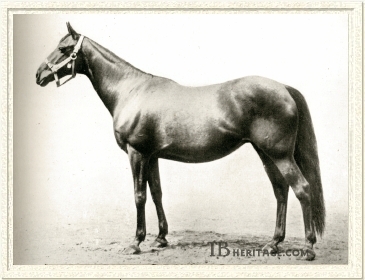

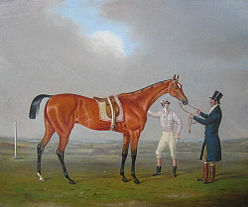
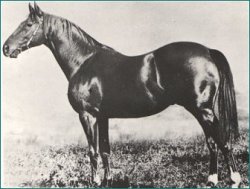


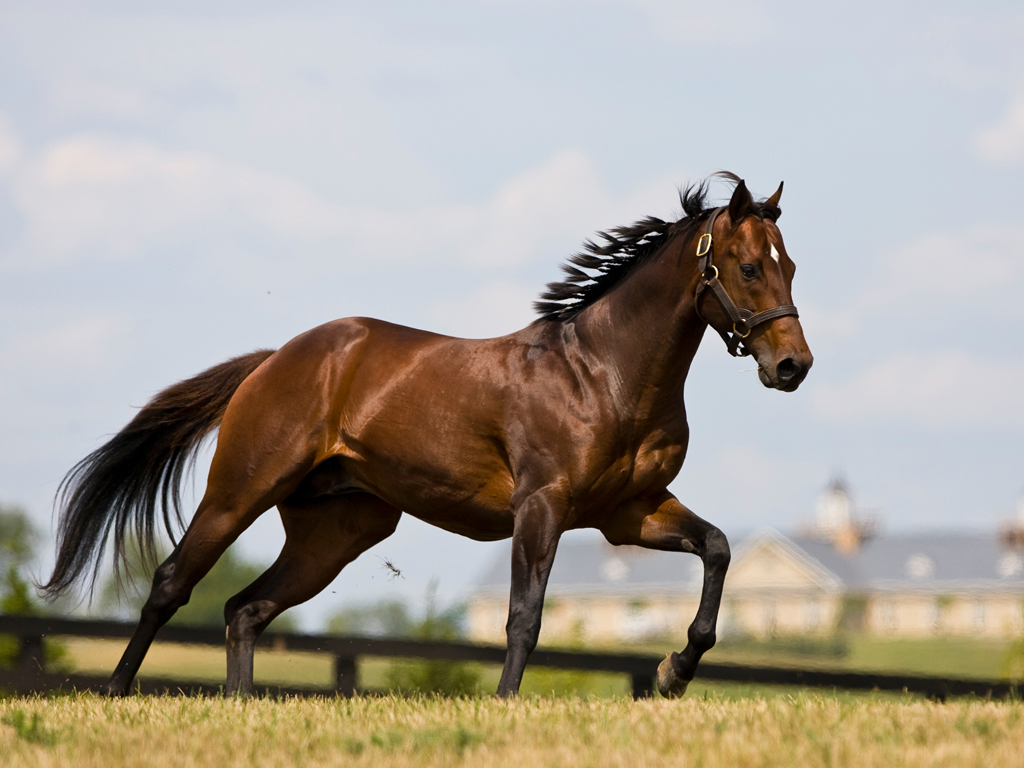

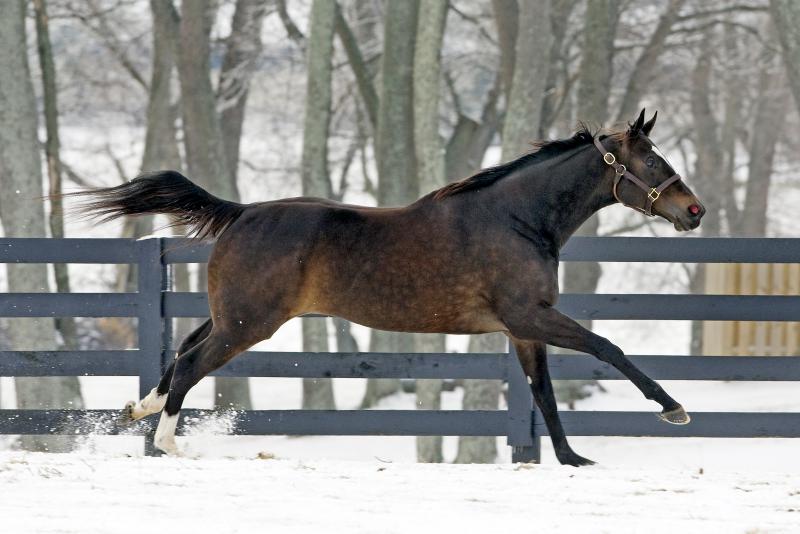

1 ping
The first 5 essays on this site should be read in the following order: » Broodmares Incorporated
February 26, 2014 at 5:12 pm (UTC 0) Link to this comment
[…] 5 Diadem […]